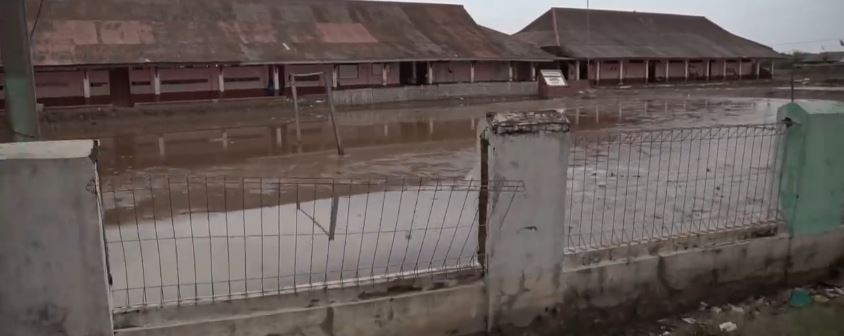The effects of climate change on extreme weather events are becoming increasingly pronounced and widespread across the globe. As global temperatures rise due to human activities such as burning fossil fuels and deforestation, the Earth’s climate system undergoes significant alterations. These changes amplify the frequency, intensity, and duration of extreme weather phenomena, including heatwaves, hurricanes, droughts, and heavy rainfall events. Warmer temperatures lead to enhanced evaporation rates, which in turn increase atmospheric moisture levels and contribute to more intense precipitation events. Additionally, climate change disrupts atmospheric circulation patterns, influencing the behavior of jet streams and storm tracks, thereby exacerbating the occurrence of extreme weather events in various regions.

Intensification of Heatwaves and Temperature Extremes
Climate change exacerbates heatwaves and temperature extremes by raising baseline temperatures and altering weather patterns. Heatwaves, characterized by prolonged periods of unusually high temperatures, become more frequent and severe as global temperatures continue to rise. Higher temperatures also contribute to heat-related illnesses and fatalities, particularly among vulnerable populations such as the elderly, children, and individuals with pre-existing health conditions. The urban heat island effect further amplifies the impact of heatwaves in densely populated areas, where built environments absorb and retain heat, exacerbating local temperature disparities and health risks.
Amplification of Hurricane Intensity and Frequency
Climate change influences the intensity and frequency of hurricanes and tropical storms, posing significant risks to coastal communities and ecosystems. Warmer ocean waters provide the energy necessary for hurricanes to strengthen rapidly and reach higher wind speeds, increasing their destructive potential. Rising sea levels associated with climate change also enhance storm surge heights, leading to more extensive flooding and coastal erosion during hurricane landfalls. The interaction between climate change and hurricane activity underscores the need for robust adaptation strategies, including improved early warning systems, resilient infrastructure, and enhanced coastal management practices to mitigate risks and protect vulnerable communities.
Impact on Drought and Water Scarcity
Climate change exacerbates drought conditions and water scarcity in regions susceptible to reduced precipitation and increased evaporation rates. Rising temperatures accelerate soil moisture depletion, leading to prolonged periods of drought that adversely affect agriculture, water supply, and ecosystems. Drought-induced water shortages can trigger conflicts over scarce resources and exacerbate food insecurity, particularly in regions dependent on rain-fed agriculture. Climate adaptation measures such as water conservation, drought-resistant crop varieties, and sustainable water management practices are essential for mitigating the socioeconomic and environmental impacts of prolonged drought conditions exacerbated by climate change.
Changes in Precipitation Patterns and Flooding Risks
Climate change alters precipitation patterns, leading to more frequent and intense rainfall events in some regions while exacerbating drought conditions in others. Increased atmospheric moisture levels intensify rainfall rates and contribute to flash floods, riverine flooding, and urban inundation events. Urbanization and inadequate drainage systems further compound flood risks, placing communities at heightened vulnerability to climate-induced inundation and water-related hazards. Effective flood risk management strategies, including land-use planning, floodplain mapping, and infrastructure upgrades, are essential for enhancing resilience and reducing the socioeconomic impacts of extreme precipitation events exacerbated by climate change.

Wildfire Frequency and Severity
Climate change influences wildfire occurrence and severity by creating favorable conditions for fire ignition, spread, and intensity. Rising temperatures and prolonged drought conditions increase vegetation dryness, making landscapes more susceptible to ignition from human activities or lightning strikes. Stronger winds associated with climate variability and atmospheric patterns can accelerate fire spread over vast areas, posing significant threats to biodiversity, air quality, and human health. Effective wildfire management strategies, including prescribed burning, forest management practices, and community preparedness measures, are crucial for mitigating the escalating risks posed by climate-driven wildfire events.
Vote
Who is your all-time favorite president?
Impact on Ecosystems and Biodiversity
Climate change disrupts ecosystems and threatens biodiversity by altering habitat suitability, species distributions, and ecological interactions. Shifts in temperature and precipitation patterns can force species to migrate to more suitable habitats or face population declines due to habitat fragmentation and reduced reproductive success. Coral reefs, polar regions, and tropical rainforests are particularly vulnerable to climate-induced stressors such as ocean acidification, sea ice loss, and extreme weather events, jeopardizing the resilience of ecosystems essential for global biodiversity and ecosystem services. Conservation efforts, habitat restoration initiatives, and international collaborations are critical for safeguarding vulnerable species and ecosystems from the detrimental impacts of climate change.

Socioeconomic Implications and Adaptation Strategies
The socioeconomic implications of climate change on extreme weather events are profound, affecting human health, livelihoods, infrastructure, and economic stability. Vulnerable populations, including low-income communities and marginalized groups, bear disproportionate burdens from climate-related disasters, exacerbating existing social inequalities and contributing to displacement, food insecurity, and poverty. Adaptive strategies such as climate-resilient infrastructure development, disaster risk reduction measures, and community-based adaptation initiatives are essential for enhancing societal resilience and safeguarding human well-being against the escalating impacts of extreme weather events intensified by climate change.
Mitigation Efforts and Global Cooperation
Mitigating the effects of climate change on extreme weather events requires concerted global efforts to reduce greenhouse gas emissions, enhance climate resilience, and transition towards sustainable development pathways. International cooperation, policy frameworks such as the Paris Agreement, and commitments to renewable energy adoption are essential for achieving climate mitigation targets and limiting global temperature rise. Integrated approaches that combine mitigation, adaptation, and sustainable development goals are crucial for building a resilient future that mitigates the impacts of extreme weather events and ensures environmental sustainability, economic prosperity, and social equity for present and future generations.

The effects of climate change on extreme weather events are multifaceted and far-reaching, posing significant challenges to ecosystems, communities, and economies worldwide. Addressing these challenges requires proactive measures to reduce greenhouse gas emissions, enhance climate resilience, and promote sustainable development practices that mitigate the impacts of extreme weather events while safeguarding the well-being of vulnerable populations and preserving planetary health. By implementing comprehensive strategies and fostering global cooperation, societies can adapt to climate change impacts and build a resilient future capable of addressing the complexities of a changing climate.